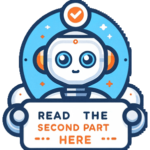Table of Contents
ToggleSelecting the Correct AI Tool is Сrucial
The right AI tool can streamline workflows, enhance accuracy, expedite data analysis, offer scalability, provide personalization, and foster innovation. However, careful selection tailored to specific needs and contexts ensures that the chosen AI tool can fully deliver its potential.
-
- Efficiency and productivity: AI tools can automate routine tasks, allowing professionals to focus on complex and creative responsibilities. For example, UiPath is a Robotic Process Automation (RPA) tool that can be programmed to carry out repetitive tasks based on rules, without human intervention. This Forbes article discusses how software automation and business accelerators, like UiPath, contribute to improved efficiency and productivity.
-
- Accuracy and precision: In fields like medicine or finance, where precision is non-negotiable, AI tools perform tasks with high accuracy, minimizing human error. An example of this is Experian Decision Analytics: a suite of analytic tools that use AI to analyze customer behavior and predict future behavior. “Customer Behaviour Analysis by Using AI in Banking Sector-Need of an Hour” presents how AI tools are supporting banks’ abilities to predict consumer behavior, understand purchase preferences, and even improve transaction management.
-
- Data analysis: AI tools swiftly and accurately analyze extensive data, furnishing insights that would otherwise be time-consuming or even impossible for humans to unearth. ‘Tableau,’ for instance, offers powerful data visualization and analysis features. How Organizations Can Bridge the Gap Between Data Science and Business Outcomes, identifies that the challenge is not about having enough data, but rather, not enough people who can analyze it. A problem perfectly positioned for AI tools like Tableau.
-
- Scalability: AI tools are built to handle tasks at an overwhelming scale, impossible for humans. In the era of big data, this becomes paramount. Customer relationship management systems like Salesforce Einstein and Zoho CRM use AI to automate tasks and provide insights at scale. They can automate data entry, prioritize leads, offer predictive insights, and more. Read about how SalesForce is leveraging this ability to deliver content as scale.
-
- Personalization: AI tools offer personalized experiences based on individual behaviors and preferences, boosting user satisfaction and engagement. ‘Spotify’ uses AI to personalize music recommendations for each user. “Spotify Embraces AI: From Personalized Playlists to Audio Ads” explores how Spotify uses AI to enhance user experiences.
-
-
Innovation: AI tools spur innovation by offering fresh approaches to tasks, leading to novel products, services, and customer interaction methods. ‘Grammarly,’ for example, uses AI to improve writing style and grammar, pushing the boundaries of what was thought possible for writing aids. “Grammarly introduces a ChatGPT-style AI tool for writing and editing” offers insights into how Grammarly uses advanced AI technology that adapts to each user’s writing style.
-
What to Consider When Looking for an AI Productivity Tool
AI productivity tools have proven to be a game-changer for many working professionals. They help automate tasks, analyze vast amounts of data, and offer precise insights, among other benefits. But with the plethora of tools available, how can you choose the right one for your needs? Here are some key factors to consider when looking for an AI productivity tool.
-
- The type of data you are working with. The first thing to consider is the kind of data you’re dealing with. Some AI tools are better equipped for numerical data, while others excel at handling textual data. For instance, if you’re an HR manager working with a mix of numerical and textual data (like employee performance reviews), you might use an AI tool like Power BI. This tool can take in various types of data and convert them into meaningful insights, helping you draw connections between benefits and performance reviews.
-
- The objective of your task. Next, it’s important to define what you’re hoping to achieve with the AI tool. Are you looking to generate reports? Predict trends? Automate routine tasks? Let’s say you’re a sales representative who wants to generate a list of your top leads every week. Here, an AI plugin could come in handy. You can ask it questions like, “Who are my top 5 leads this week?” and it’ll generate the answers for you.
-
- Your problem domain. Finally, consider the specific area or field in which you’re working or the problem you’re trying to solve. Different AI tools are designed for different problem domains. For example, suppose you’re a pet owner wanting to set an alert for when you need to refill your dog’s water bowl. An AI service like Google’s AutoML Vision would be suitable. You could take snapshots of the water bowl at various stages—full, half, low, empty—and feed this data into the AI. The tool can then be trained to recognize when the bowl needs refilling and alert you accordingly.
The right AI tool can drastically enhance your productivity and decision-making abilities. However, finding the best fit requires a clear understanding of the data you’re dealing with, the objective of your task, and your specific problem domain.
In the first part of our exploration, we’ve explored how the right AI tool can transform workflows, enhance precision, and bring innovative solutions to the table. From automating routine tasks with RPA tools like UiPath to personalizing experiences with AI like Spotify, the potential of AI tools in boosting productivity and creativity is immense. We’ve also discussed critical factors to consider when choosing an AI productivity tool, including the type of data, the objective of your task, and the specific problem domain.
In the next part of our journey, we will delve deeper into best practices and essential considerations in selecting AI tools. We’ll address the importance of data security and privacy, the quality of output, customization capabilities, and adaptability of these tools. Stay tuned as we navigate through the nuances of making the right choice in the AI tool selection process.

